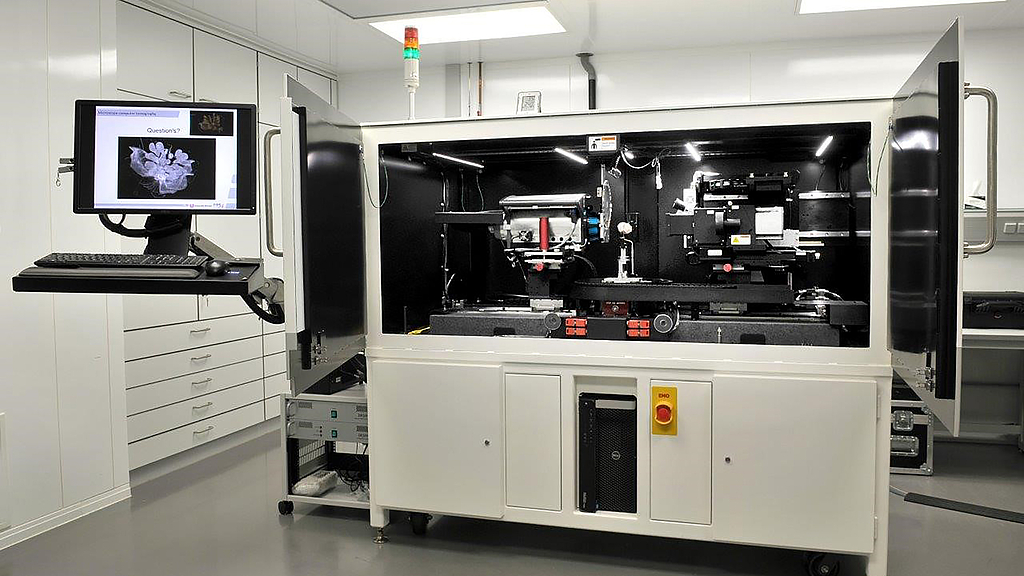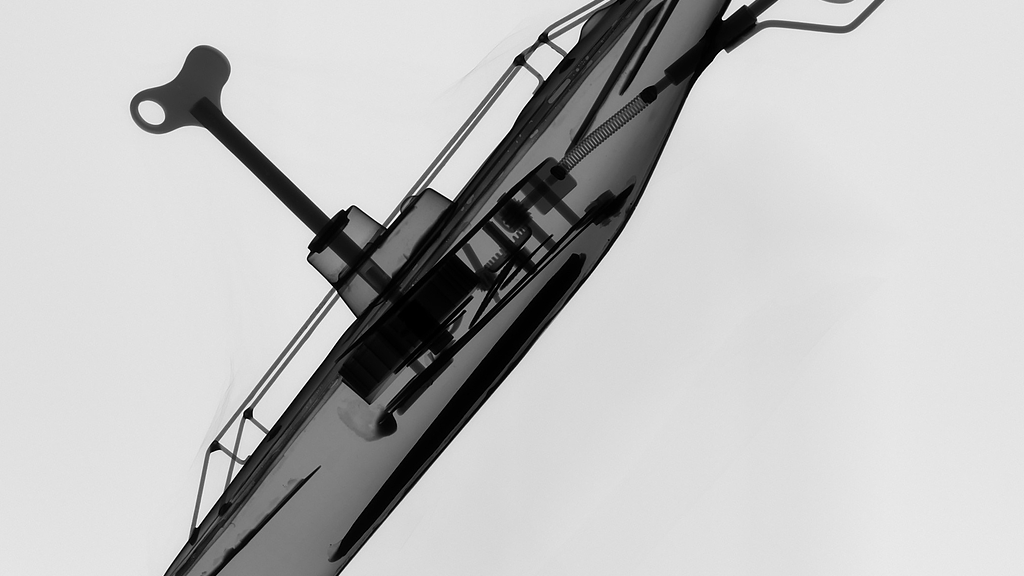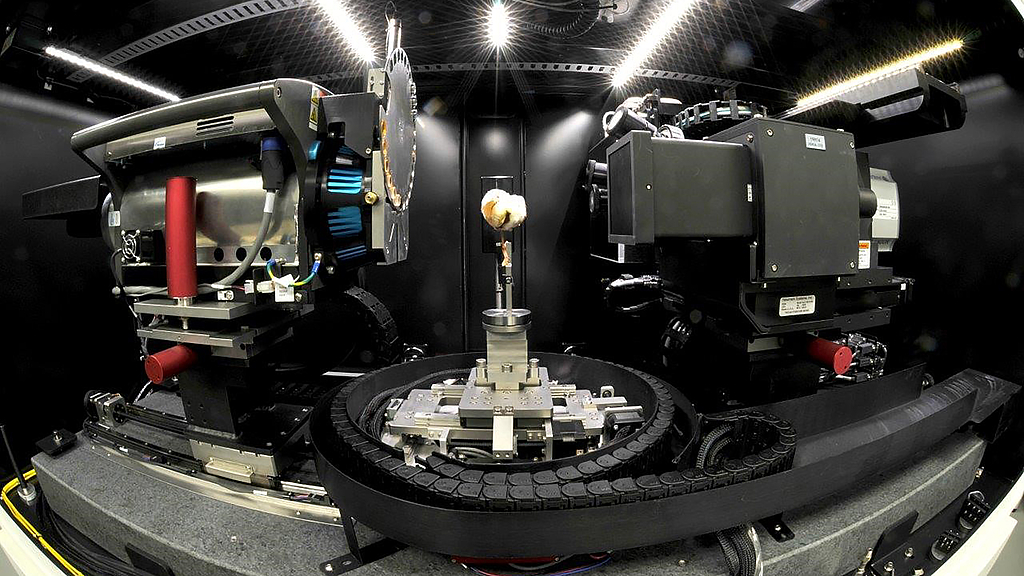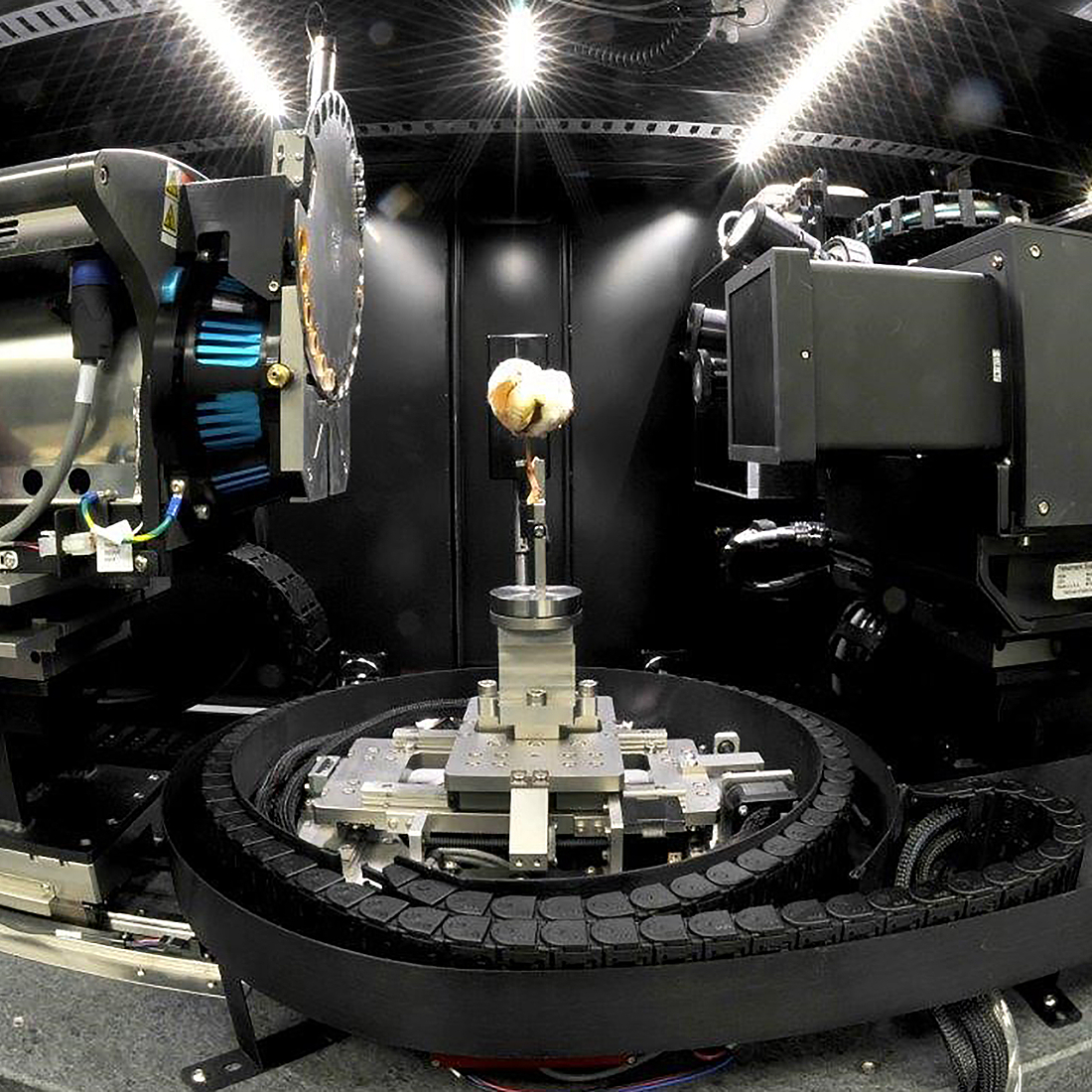Making maritime materials a museum experience
The joint project "Digital Materialities. Virtual and Analogue Forms of Exhibition", DigiMat for short, is looking for new exhibition and mediation formats for digital exhibits. The German Maritime Museum (DSM) / Leibniz Institute of Maritime History, the MAPEX Center for Materials and Processes at the University of Bremen and the Leibniz Institute for Knowledge Media (IWM) in Tübingen are involved. A touring exhibition will show the results from 2024.
The materials sciences are very close to things - one would think. But that's not necessarily true: in fact, materials researchers today often don't work on the material samples themselves as much as they deal with digital image data output by high-precision measuring devices. Prof. Lucio Colombi Ciacchi, materials scientist at the University of Bremen and former spokesperson of the MAPEX Center for Materials and Processes, explains: "Material characterisation is about using physical methods to extend the perceptual capabilities of our senses in order to gain new insights. The digital reconstruction of the examined material on the computer plays an extremely important role in this, because only in this way does the technically recorded data also become really tangible for people." This gives an object, be it a material sample in the laboratory or a museum exhibit, a whole range of new "digital materialities" that enrich the observation process, but can also deliberately limit it in certain directions.
"This must make museums sit up and take notice," adds Prof. Ruth Schilling, scientific director of the exhibition and research area at the DSM: "What does it actually mean for the research of objects if I rely predominantly on digital copies here?" So if museums exhibit materiality and science's view of materials has long since become a virtual one, then virtual exhibition formats may also be needed to do justice to the role of materials in museums, says Schilling. "This by no means means that material objects lose their historical value. Rather, what is important is a cleverly conceived interplay of real objects and the matching digital applications. This can provide in-depth insights and take into account a change in media use."
Developing and implementing such formats and researching their audience impact is the subject of the research project "Digital Materialities. Virtual and Analogue Forms of Exhibition", or DigiMat for short, for the implementation of which the DSM, MAPEX at the University of Bremen and the Leibniz Institute for Knowledge Media in Tübingen will receive funding from the Senate Committee on Competition of the Leibniz Association from 2021.
As part of the project, selected objects of both material and historical interest from the museum's collection will be recorded using state-of-the-art measuring technology such as CT scanners and spectrographs and thus made visible and tangible in a completely new way. So far, MAPEX has used computer tomography to take a picture of a submarine model from the DSM collection.
The resulting digital copies open up entirely new possibilities for understanding objects and talking about them - but also require entirely new mediation strategies, some of which have yet to be developed. "In order to be able to fully exploit the potential of authentic objects in combination with their digital twins for knowledge transfer, for example, there must not just be a juxtaposition of the two elements, but mediation strategies must be developed that make clear how both elements relate to each other so that they can explain each other," notes Prof. Dr. Stephan Schwan, head of the "Realistic Representations" working group at the Leibniz Institute for Knowledge Media in Tübingen.
As a result of the three-year collaborative project, a travelling exhibition with mixed analogue and digital formats is to be created, which will probably be shown from 2024.
The Leibniz Institute for Knowledge Media (IWM)
The Leibniz Institute for Knowledge Media (IWM) in Tübingen researches how digital media influence knowledge and communication processes and how new technologies can be used to improve these processes. The basic and application-oriented research focuses not only on institutional fields of learning such as schools and universities, but also on informal learning on the internet, at the workplace or in museums. Researchers from various disciplines work together at the IWM, especially from psychology, communication science, neuroscience and computer science. Founded in 2001, the non-university research institute is a member of the Leibniz Association.
The Leibniz Institute for Knowledge Media (IWM)
The Leibniz Institute for Knowledge Media (IWM) in Tübingen researches how digital media influence knowledge and communication processes and how new technologies can be used to improve these processes. The basic and application-oriented research focuses not only on institutional fields of learning such as schools and universities, but also on informal learning on the internet, at the workplace or in museums. Researchers from various disciplines work together at the IWM, especially from psychology, communication science, neuroscience and computer science. Founded in 2001, the non-university research institute is a member of the Leibniz Association.
The MAPEX Center for Materials and Processes at the University of Bremen
MAPEX is a cross-departmental and cross-institutional competence network in the field of materials science and materials engineering. The scientific goal of MAPEX is the research and development of materials and processes for applications in the field of sustainable mobility and energy, including human exploration of space. Through their research in all disciplines of science, engineering, mathematics and computer science, MAPEX members strive for a deeper understanding of the relationships between processes, properties and performance of materials. The approximately 1000 scientific and technical staff active in the MAPEX network develop materials engineering solutions to improve the lives of everyone.

3D X-ray microscope of the MAPEX Center for Materials and Processes at the University of Bremen.
Photo: Oliver Focke, MAPEX, University of Bremen

X-ray image of a submarine model (30.8 cm long) from the DSM collection.
Photo: Oliver Focke, MAPEX, University of Bremen

A look inside the 3D X-ray microscope of the MAPEX Center for Materials and Processes at the University of Bremen.
Photo: Ulrich Reiß (Leibniz IWT)

